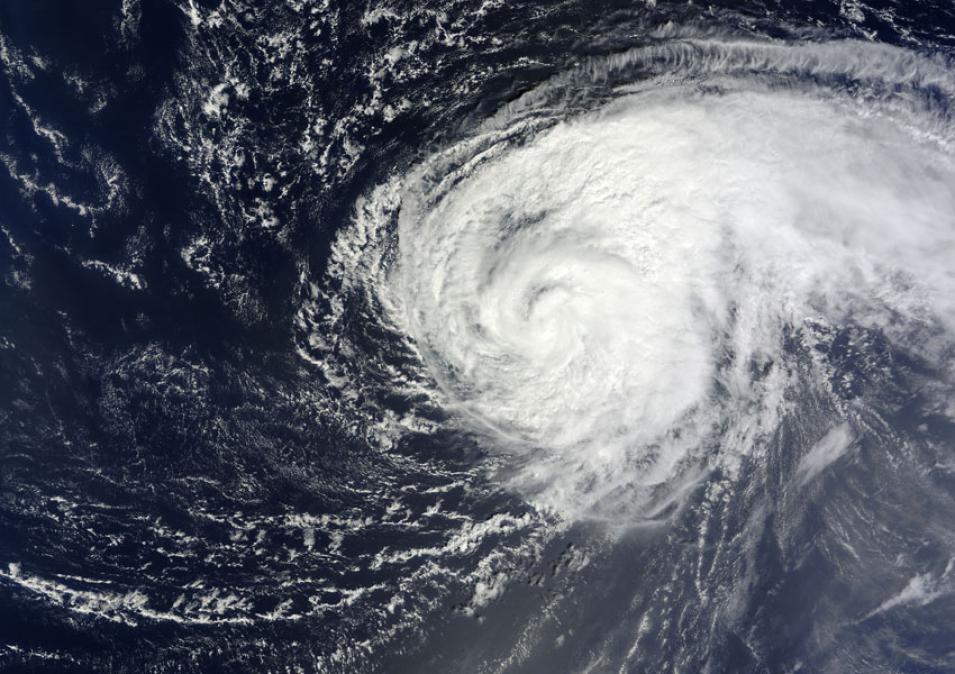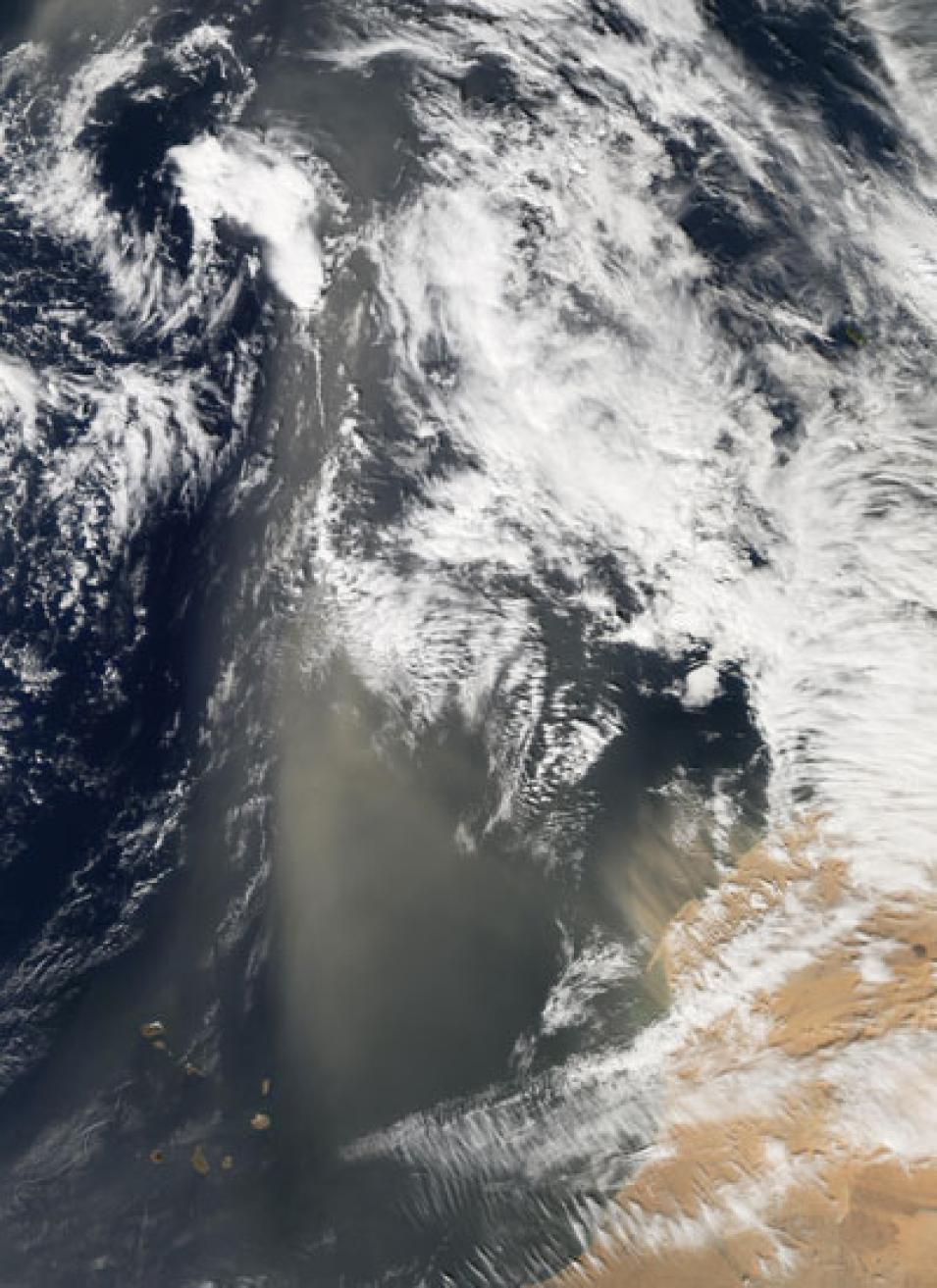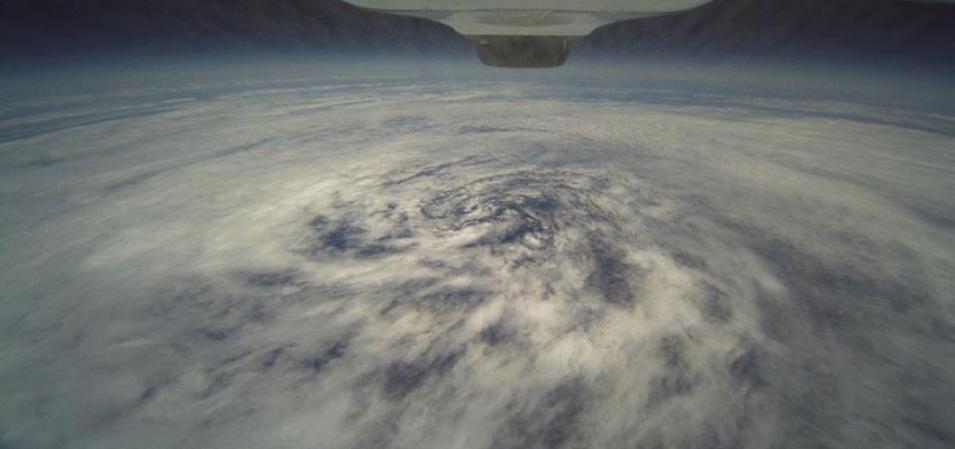But HS3 studies of Hurricane Nadine in 2012 did not quite see that. “Right now our observations don’t support a direct influence in this case, but the SAL suggests an indirect influence, weakening the storm,” Braun said. “It’s sort of able to do it from a distance.” The dust layer absorbs solar radiation, which may cause temperature gradients and shifting wind speeds near and within the storm, impacting its development.
HS3 makes one thing clear: the effect of the SAL is not cut and dried. “We’ve often looked for the easy explanations,” Braun said, “I think we’re getting a better sense at what stage in the lifecycle of a storm the SAL can play a role.” Early on in a storm’s development, the SAL may be more consequential, before the tempest fully forms and is able to protect its inner core with impassable, well-organized walls of wind and rain.
Getting the spins
Hurricanes are monstrous energy machines, converting heat energy garnered from a warm ocean to mechanical energy through convection, or heat transfer. Hurricanes spin two ways. Primary circulation moves in a horizontal direction, while secondary circulation cycles air vertically: in, up, and out. Warming air flows in at the bottom, up through the rain bands and eye wall, and then fans out at the top. As a storm gets more organized, inflow toward the center near the surface increases.
The hope with HS3 is to connect the structure of convection, the upward section in secondary circulation, to the evolving low-level and upper-level wind fields. Much like ice skaters can spin faster by pulling their arms in, winds speeds increase as the low-level air moves toward the center. But air cannot speed up unless clouds pump low-level air out at the top.
That is why Peter Black at NRL approaches intensification from a different angle. “The outflow essentially acts like a vacuum cleaner,” Black said. Forcing air away, the suction drops the storm’s central pressure, and then warm air fills the vacuum. As long as warming air rises up and out faster than new air spirals in, the central pressure in a developing hurricane will fall. And falling pressure is an indicator of hurricane intensity. “Though still a matter of debate,” Braun said, “HS3 provides the best opportunity to date to examine the role of the outflow layer in hurricane intensification.”
Satellites have been mapping hurricanes since the 1970s, but their images of the outflow layer lacked the nitty-gritty details. Getting a sense of the structure of the inner core may be key. Black said, “From our perspective, the HS3 mission is sort of a breakthrough.” Outflow is a side benefit of the mission. Braun, HS3’s principal investigator said, “It never was part of the original proposal, but later we realized the mission could play a significant role in looking at the outflow structure because of the Global Hawk capabilities and its payloads.”
The mission’s unmanned NASA Global Hawk aircraft operate at extreme altitudes up to 63,000 feet, climbing into the stratosphere above a storm. Getting that high is not easy. Most airplanes struggle to burn jet fuel with the low oxygen at that altitude. Flying for up to twenty-six hours and decked with profiling sensors, lasers, cameras and other instruments, the Global Hawks can now see the full extent of the top layer of hurricanes, where outflow happens.
An unexpected profile
For the mission, two Global Hawks soar. One probes the inner core or eyewall region of the storm where the most intense surface winds and rainfall occur. The other Hawk samples the outflow layer by deploying as many as 88 dropsondes, instrumented packages that parachute down through the storm. The result is an image of outflow structure unlike what scientists had imagined.
“Many of us were a bit surprised by the wind profiles we saw in the outflow layer,” Braun said. Dropsondes showed that outflow winds peak at the very top of the layer rather than somewhere within. These winds experience sharp transitions as opposed to more gradual transitions. And overall, the shape of the full outflow layer is much more concentrated, much thinner than satellite data or models had estimated.
Then there are the outflow jets—roaring channels of humid, high-speed air that surround the top of a hurricane. Sometimes a hurricane only has one channel. Other times, two or more form in different quadrants of the storm. Through these channels most of the air is being evacuated from the storm, but, as the dropsondes show, it is not a uniform process. “Not everything is going out equally in all directions,” Black said. “Something in the environment around the storm focuses the air into high-speed channels.”
Black said, “We had noticed that whenever the tropical storm developed two of these outflow jets, one directed at the equator, one directed towards the pole, it seemed to correspond to a period of rapid intensification.” To help link these events with causes and effects, scientists turned to storm models to reproduce the out-flow structure.



